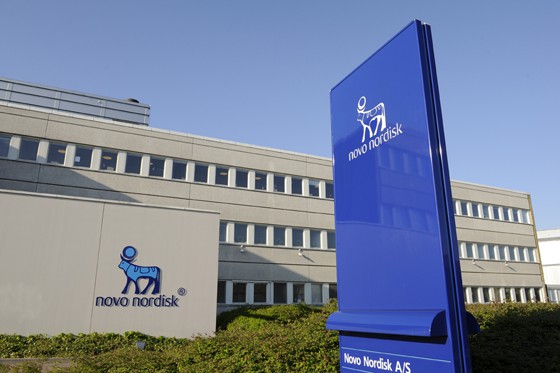
For the last few quarters, Novo Nordisk has been facing a strong challenge from Eli Lilly to its diabetes blockbuster Victoza, but its first-quarter results show it is still very much in the game.
After correcting for currency exchange factors, once-daily injectable GLP-1 agonist Victoza (liraglutide) grew 18% to DKK 6.0bn ($966m, despite the stellar growth of Lilly’s once-weekly rival Trulicity (dulaglutide) which rocketed 82% to $678m in the first three months of the year.
Novo claimed approval for its own once-weekly GLP-1 drug – Ozempic (semaglutide) – towards the end of last year, and the new product made DKK 69m in its first few weeks on the market after launch in the US – its first market – in February.
That was a tad below analyst expectations, but Novo’s chief executive Lars Fruergaard Jørgensen said on a conference call that the uptake was going as expected. He said formulary coverage in the US was increasing, and still expects Ozempic to reach revenues of at least DKK 1bn ($160m) in 2018.
“The majority of our sales districts are now switching promotional activities from Victoza to Ozempic,” he added. “This reflects that we have now obtained formulary access covering more than half of the GLP-1 volume.” Novo Nordisk says Victoza is still the most prescribed GLP-1 drug in the US, with a market share of 48%, down from 56% a year ago.
In a bid to maintain its lead, Novo Nordisk is working on filing for approval for Ozempic that will reflect the results of the SUSTAIN-7 trial showing a superior profile to Trulicity, and is also making progress to filing its oral formulation of semaglutide that it believes could be a game-changer for the GLP-1 class and expand the use of the drug into obesity.
The company is already creating a market-leading presence in obesity treatment: its injectable Saxenda (a version of liraglutide aka Victoza), saw sales rise 43% in the first three months of the year to DKr800m ($128m). The company predicts that the global obesity epidemic will fuel growth for years to come, despite reservations in healthcare systems about paying for drugs to treat the problem.
Victoza’s performance meant that Novo Nordisk was able to weather the pressure in the insulins market, which kept its overall insulin sales flat at DKK 14.66bn. This was despite growth for new long-acting insulin Tresiba (insulin degludec), which grew 33% to DKK 1.75bn in local currencies.
The company raised its sales and profits guidance for the full year, saying it expects 3% to 5% growth after correcting for exchange rate factors, driven mainly by Victoza and Ozempic which will be “partly countered by intensifying global competition both within diabetes care and biopharmaceuticals, especially within the haemophilia inhibitor segment, as well as continued pricing pressure within diabetes care.”




